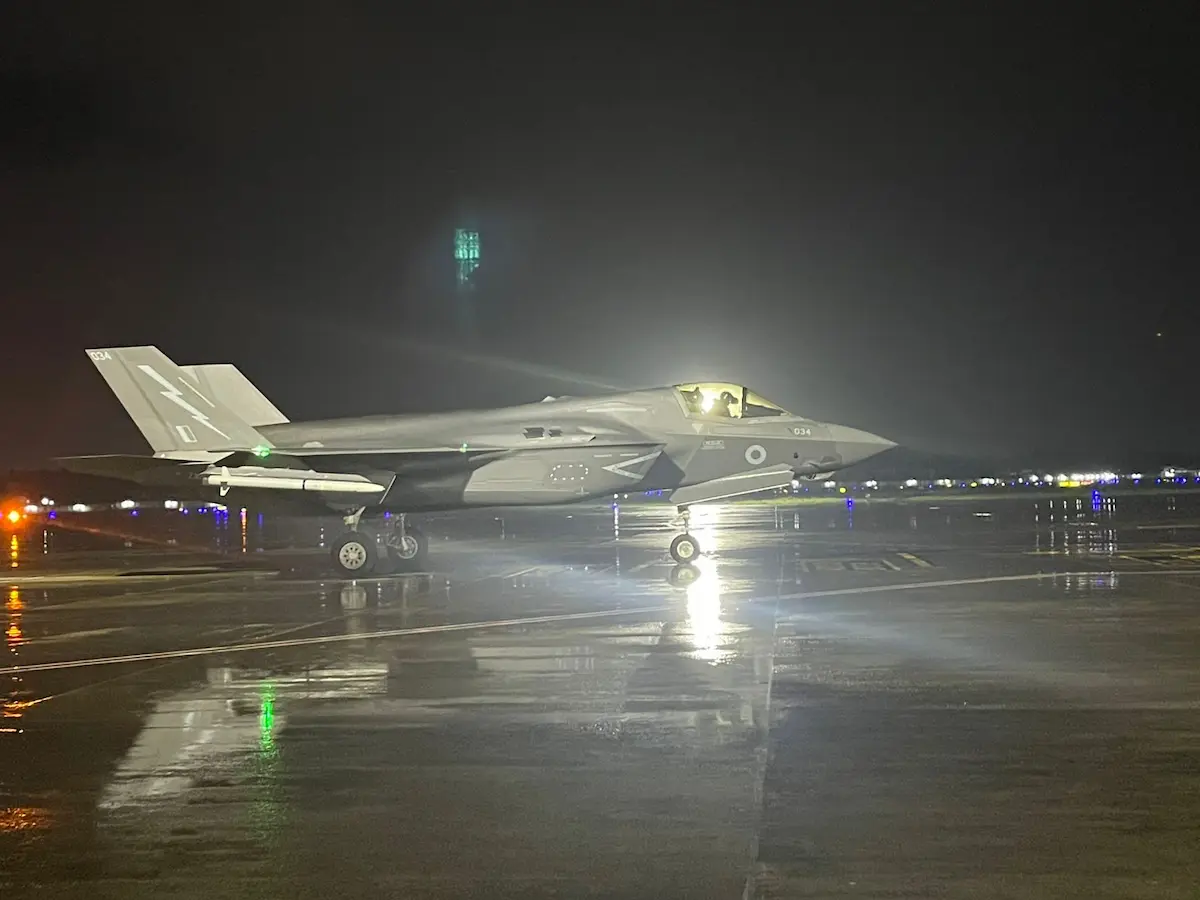
A British Royal Navy F-35B stealth jet remains stranded at Kerala’s Thiruvananthapuram Airport after a hydraulic failure
1. Emergency in the Skies: How the F-35B Landed in Kerala
On the night of June 14, 2025, a British Royal Navy F-35B Lightning II fighter jet made an unscheduled emergency landing at Thiruvananthapuram International Airport in Kerala. The aircraft, launched from the HMS Prince of Wales during joint Indo-British naval exercises in the Arabian Sea, experienced a hydraulic system failure mid-flight. With adverse weather and sea conditions preventing a return to the carrier, the pilot was forced to divert to the nearest pre-designated emergency airstrip.
The Indian Air Force’s Integrated Air Command and Control System (IACCS) coordinated with civilian air traffic controllers to facilitate the landing. The jet touched down safely around 9:30 PM and was immediately secured in Bay 4 of the airport. The pilot and crew were relocated to the airport’s Emergency Medical Centre, while a Royal Navy technical team was airlifted in overnight to begin repairs.
Despite swift action, the aircraft remains grounded due to persistent mechanical issues. The F-35B’s short take-off and vertical landing (STOVL) capabilities, while revolutionary, also make it notoriously complex to maintain, especially outside of its native support infrastructure.
2. Security, Secrecy, and Sovereignty: The Diplomatic Tightrope
The F-35B is not just any fighter jet, it’s a $100 million fifth-generation stealth aircraft packed with classified avionics, radar-evading tech, and next-gen sensors. Its presence on Indian soil has triggered a delicate diplomatic balancing act.
The Royal Navy declined an offer from Air India to house the jet in a hangar, citing concerns over exposing sensitive technology. Instead, the aircraft remains parked in the open, under round-the-clock security by the Central Industrial Security Force (CISF). British personnel have requested constant visual access to the jet, and a local ground-handling agency has been assigned to assist with logistics.
India’s Ministry of Defence has maintained a low profile, treating the incident as a routine emergency. However, the jet’s prolonged stay has drawn attention from aviation enthusiasts, media, and even foreign observers. The situation underscores the geopolitical sensitivities involved when cutting-edge military hardware crosses borders, even unintentionally.
3. What’s Next: Repairs, Repatriation, and Repercussions
As of June 20, the F-35B remains grounded, with no confirmed timeline for departure. Royal Navy technicians continue to troubleshoot the hydraulic system, while contingency plans are being considered, including relocating the jet to Air India’s maintenance hangar under strict security protocols if repairs cannot be completed on the tarmac.
The incident has also reignited discussions about India’s own fifth-generation fighter ambitions. Just days before the emergency landing, the Indian government approved the development of a prototype for its indigenous stealth aircraft. The F-35’s unexpected presence in Kerala has inadvertently spotlighted the technological gap and strategic aspirations in India’s defense ecosystem. For now, the jet remains a high-tech guest in a high-stakes waiting game, its grounded frame a symbol of both technological marvel and logistical vulnerability
Stay updated with the latest news on Rapido Updates. Keep yourself updated with The World, India News, Entertainment, Market, Gadgets, Sports, and many more..
1 thought on “Stealth Grounded: British F-35B Jet Triggers Diplomatic Drama in Kerala After Emergency Landing”